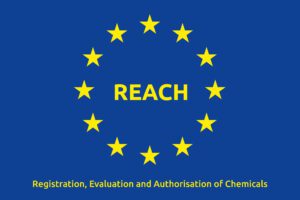Environmental, Health, and Safety (EHS) data management can include everything from data collection and storage to software integration to sustainability and compliance reporting. Often, this data can be sensitive in nature, including elements such as proprietary formulations or employees’ personal information.
With the uptick in cyberattacks and data breaches in recent years, it is more important than ever to keep your EHS data secure. A lack of oversight in cybersecurity can put your company’s quality data at risk. This can cost you time and money, slow down your business operations, and cause you to lose sensitive data. Identifying the sensitive data you have access to and applying these best practices for web application security can help you keep your company’s EHS data safe. For help with web application security, don’t hesitate to contact us at [email protected]. We can help you find the solutions to support your EHS data management needs.
Identifying What Qualifies as Sensitive Information
The first step toward securing your EHS data is recognizing what information is considered sensitive. The following list provides some common sensitive data types EHS professionals may encounter.
Personally Identifiable Information (PII)
PII encompasses any information that can single out a person, including their full name, home address, email, birth date, or monetary details. The high sensitivity of this data stems from its potential misuse in activities such as identity misappropriation, fraudulent schemes, or unauthorized intrusion into personal accounts.
Financial Information
Financial information includes confidential financial particulars such as details of bank accounts, numbers of credit cards, history of transactions, and records of investments. Illicit access to these monetary details can result in identity theft, fraudulent activities, or unauthorized financial transactions.
Classified Government Documents
These encompass information related to national security, delicate governmental procedures, military intelligence, or diplomatic correspondence. Unauthorized exposure of such confidential data can gravely impact national security, global relations, and personal safety.
Legal Case Details
Legal case information, including court documents, pleadings, depositions, and sensitive legal strategies, must be kept confidential. This is crucial to maintain legal professional privilege, protect sensitive information related to ongoing investigations, and ensure a fair legal process.
Trade Secrets
Trade secrets refer to confidential and valuable business information that provides a competitive edge to a company. This may encompass manufacturing processes, formulas, customer lists, marketing strategies, or proprietary software. Unapproved disclosure of these trade secrets can negatively impact a company’s competitiveness and profitability.
Intellectual Property (IP)
Intellectual property includes creations of the mind, including inventions, designs, trademarks, copyrights, and patents. It is essential to protect intellectual property to avoid unauthorized use, reproduction, or exploitation by others, as such actions can lead to financial loss and infringement of rights.
Steps to Protect Sensitive Data
Keeping sensitive information secure during EHS data input is essential for protecting privacy, preventing unauthorized access, and maintaining data integrity. Here are some steps you can take to protect your sensitive data.
Identify It
Begin by assessing the personal information you have in your files and on your computers. Identify the sensitive information you collect, where you store it, and how your information retention policies relate to each piece of sensitive data. It’s also essential to identify relevant laws that apply to the data you collect and determine who has access to this information.
Essentials Only
Keep only the information you need for your business operations. Identify which information you have a reason to retain and avoid storing any data without a legitimate business need. Implement the principle of least privilege by limiting access to sensitive data only to those who need it. Review and tighten data retention policies and procedures to ensure compliance and security.
Secure It
Protect the information you retain by implementing robust security measures. This can include encryption, secure storage, access controls, network security, and regular security audits. By safeguarding sensitive data, you can minimize the risk of unauthorized access or data breaches.
Purge It
Properly dispose of any data that is no longer needed. Develop procedures for secure data disposal, such as shredding physical documents or using secure data erasure methods for digital information. By disposing of data securely, you can prevent unauthorized access to discarded information.
Make a Plan
Create a plan to respond to security incidents. Develop an incident response plan that outlines the steps to take in case of a data breach or security incident. This plan should include procedures for notifying affected individuals, assessing the breach’s impact, mitigating further damage, and cooperating with relevant authorities.
Relevant Laws and Regulations
Familiarity with pertinent laws and regulations is essential in navigating the complexities of data protection. For example, in the United States, the Federal Trade Commission (FTC) Act is the governing standard that permits the Federal Trade Commission to regulate and enforce privacy and data security standards, holding businesses accountable for safeguarding consumer information.
For those operating within the European Union or dealing with EU resident data, compliance with the General Data Protection Regulation (GDPR) applies. Like the FTC Act, the GDPR establishes comprehensive guidelines for businesses regarding processing and protecting private or personal data.
Beyond these overarching regulations, professionals should remain attuned to industry-specific, country-specific, or state-specific laws that may further govern the handling of sensitive data. Staying abreast of these regulations is vital for maintaining legal compliance and ensuring the utmost security of sensitive information.
Get Support
Recognizing and protecting sensitive data is crucial in producer responsibility and environmental industries. By identifying the types of sensitive information encountered in these industries, implementing steps to protect it, and staying informed about relevant laws and regulations, individuals can safeguard sensitive data and mitigate the risks associated with unauthorized access or data breaches.
For help implementing these best practices for web application security, contact our expert team at [email protected]. We can help you find the solutions to support your EHS needs, including data and software integration and custom cloud-based solutions.






